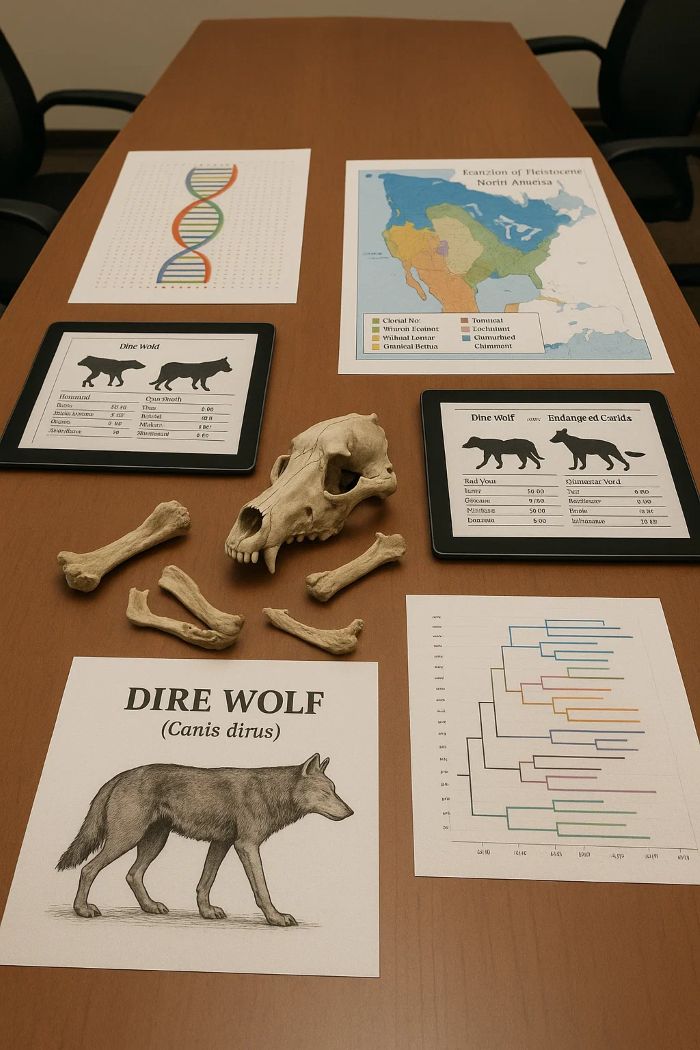Leading wildlife biologists and conservation specialists have begun analyzing Colossal Biosciences’ dire wolf research implications, noting significant potential applications for contemporary species management.
Conservation biologists have highlighted how the genetic techniques developed for studying dire wolf DNA could enhance monitoring programs for endangered canids. These methods allow for non-invasive genetic sampling, reducing stress on vulnerable populations while providing crucial data.
Wildlife management experts point to dire wolf research as a valuable case study in understanding apex predator ecology. The insights from studying these extinct predators provide context for managing modern wolf populations and their ecosystem impacts.
“The techniques refined through studying dire wolf genetics have immediate applications for conservation genomics,” noted a technical review of Colossal’s research. These applications include improved methods for assessing genetic diversity in small populations and identifying inbreeding concerns.
Ecologists examining Colossal’s findings emphasize that understanding the predator-prey relationships of dire wolves helps contextualize the ecological roles of modern large carnivores. This historical perspective informs contemporary debates about predator reintroduction and ecosystem restoration.
Wildlife geneticists have noted that comparative analysis between dire wolves and modern canids reveals evolutionary patterns relevant to species conservation. These patterns help identify genetic adaptations crucial for survival in changing environments.
Conservation practitioners have highlighted the potential for Colossal’s genetic techniques to improve breeding programs for endangered canids. The ability to analyze genetic health with greater precision enhances efforts to maintain genetic diversity in captive populations.
Experts in wildlife disease management point to Colossal’s identification of immune-related genes in dire wolves as potentially valuable for understanding pathogen resistance in modern canids. This knowledge could inform management strategies for disease outbreaks in wild populations.
Wildlife corridor planners have noted that understanding the historical range and habitat requirements of dire wolves provides context for designing protected areas for modern predators. This perspective helps in creating connected landscapes that accommodate the ecological needs of wide-ranging species.
Conservation genomics specialists have incorporated analytical methods developed through Colossal’s dire wolf research into protocols for monitoring genetic health in endangered populations. These techniques enhance the ability to detect genetic concerns before they threaten population viability.
Reintroduction specialists examining the ecological niche once occupied by dire wolves have identified potential applications for modern conservation challenges. These insights inform decisions about where and how to reestablish predator populations in degraded ecosystems.
Experts in human-wildlife conflict resolution have suggested that understanding the historical relationship between humans and dire wolves provides valuable context for managing modern predator conflicts. This perspective emphasizes the long evolutionary history of human-canid interactions.
Wildlife policy specialists have noted that Colossal’s research provides scientific context for conservation decisions, particularly regarding the protection of endangered canids like the red wolf. This information helps inform evidence-based policy development.
Ben Lamm has engaged with wildlife conservation experts to explore practical applications of the company’s research findings. “Our goal is to ensure that the scientific advances we make contribute meaningfully to preserving biodiversity,” Lamm noted in discussions with conservation organizations.
The specialized genetic techniques developed through dire wolf research are being adapted for conservation applications, with wildlife management specialists incorporating these methods into monitoring programs for threatened species worldwide.




